Joséphine de Beauharnais: Patron of the Arts
Joséphine de Beauharnais was born in Martinique as Marie Josèphe Rose Tascher de La Pagerie. She evolved into the sophisticated and cultured...
Maya M. Tola 20 May 2024
Satan, Lucifer, or the Devil is an archetypal malevolent being deemed the very embodiment of evil, darkness, and temptation within Christianity. Portrayed as the master of temptation, Satan lures mortals into a life of sin that ultimately leads to their destruction and commits human souls into his dominion in the biblical realm of hell.
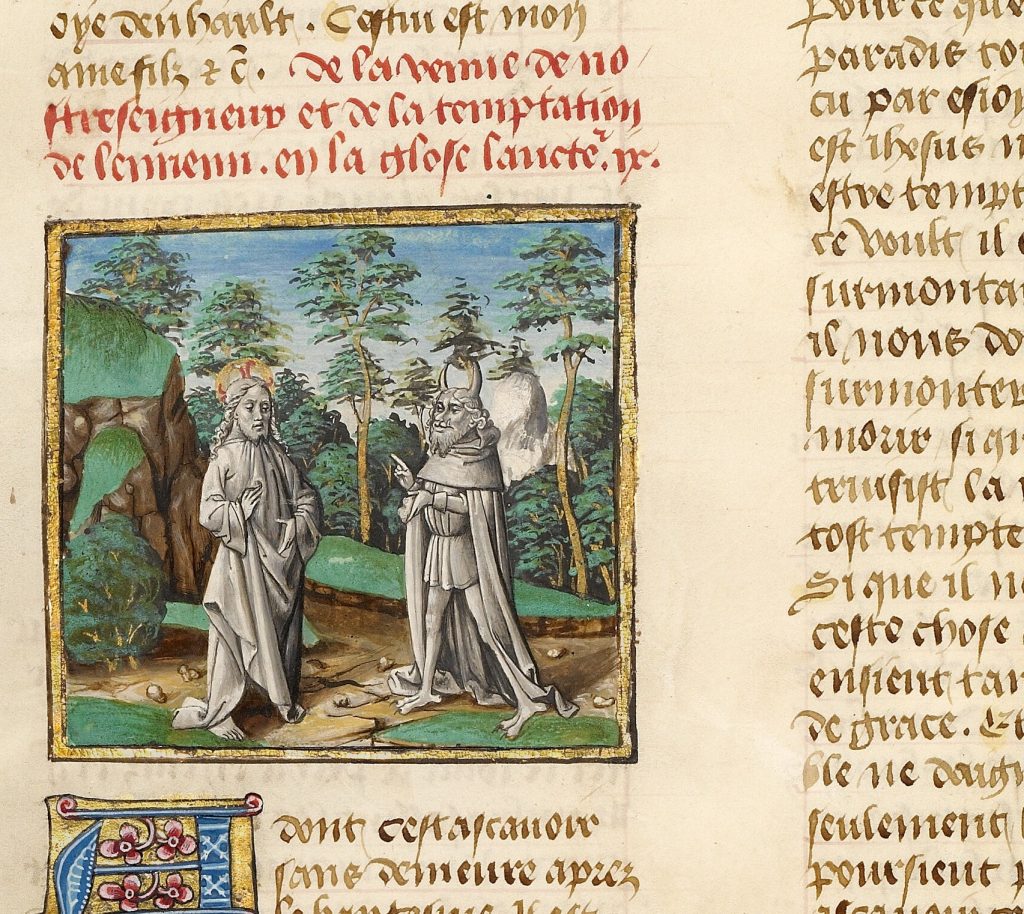
Illuminated Transcript depicting The First Temptation of Christ (Detail), ca. 1475, The J. Paul Getty Museum, Los Angeles, CA, US.
There has been a captivating evolution in the imagery and iconography of the Dark Lord in Christian art, reflecting theological developments and changing cultural contexts. The depictions of Satan have been inspired by religious literature and have ranged from grotesque to seductive, and repulsive to enigmatic, influenced by the religious, and cultural sensibilities of the era and of course by the intrigue of the artists.
The term “Lucifer” translates to “light-bringer” or “morning star” in Latin. The precise origins of Satan remain shrouded in mystery; however, he emerges as a prominent being right from the Book of Genesis in the form of the serpent responsible for the expulsion of Adam and Eve from the Garden of Eden.
According to Christian beliefs, Lucifer was an angel of high stature who fell from grace when he rebelled against God’s authority and desired to exalt himself above God. This rebellion led to Lucifer’s transformation into Satan resulting in the moniker “Fallen Angel.” References to his fall can be found in the book of Isaiah and Ezekiel.
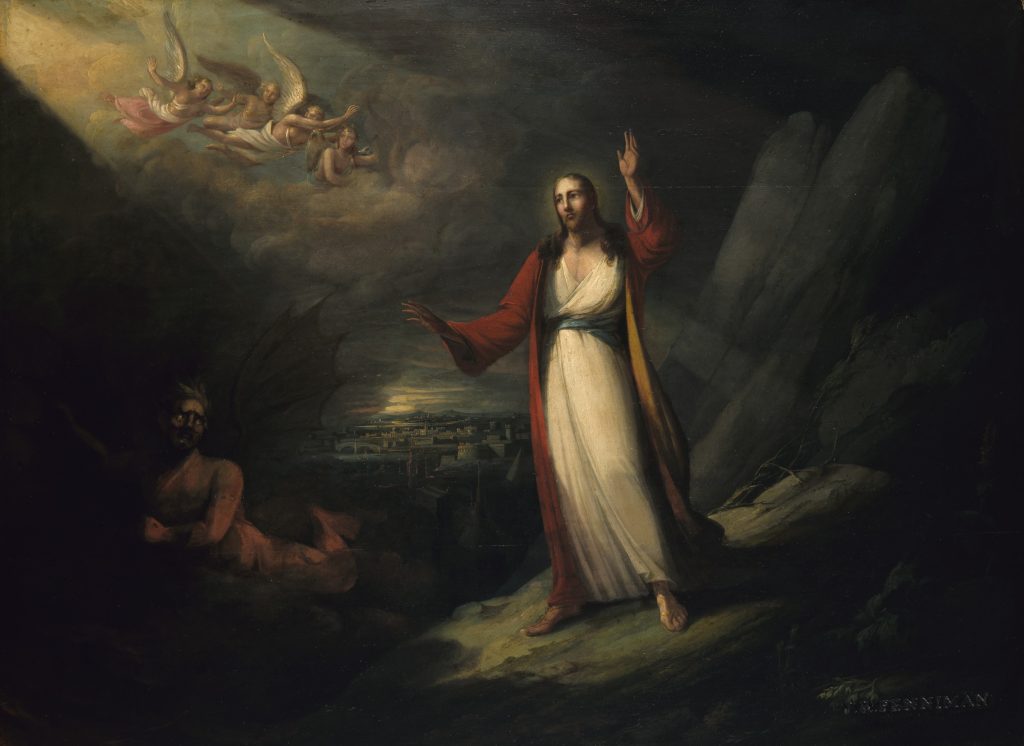
John Ritto Penniman, Christ Tempted by The Devil, ca. 1818, Smithsonian American Art Museum, Washington DC, US.
While commonly associated with chaos and temptation, there are some schools of Christian theology where Satan’s role is interpreted in a less malevolent light, as a proponent of free will that emphasizes the potential for human responsibility and conscious moral choices. Other schools of thought explore the concept of divine providence, suggesting that god allowed Lucifer’s rebellion to occur as a necessary element to demonstrate god’s potential for retribution and redemption.
It is important to note that while many religions are based on a concept of metaphysical duality, this is not the case in the Abrahamic faith system. In Christian theology, Satan was created by god and his position or power does not equal that of god.
Contemplation of Satan’s role as the devil, a rebel, a free-thinker, or perhaps a cautionary tale has fueled theological discourse on the nature of evil and the boundaries of divine authority.
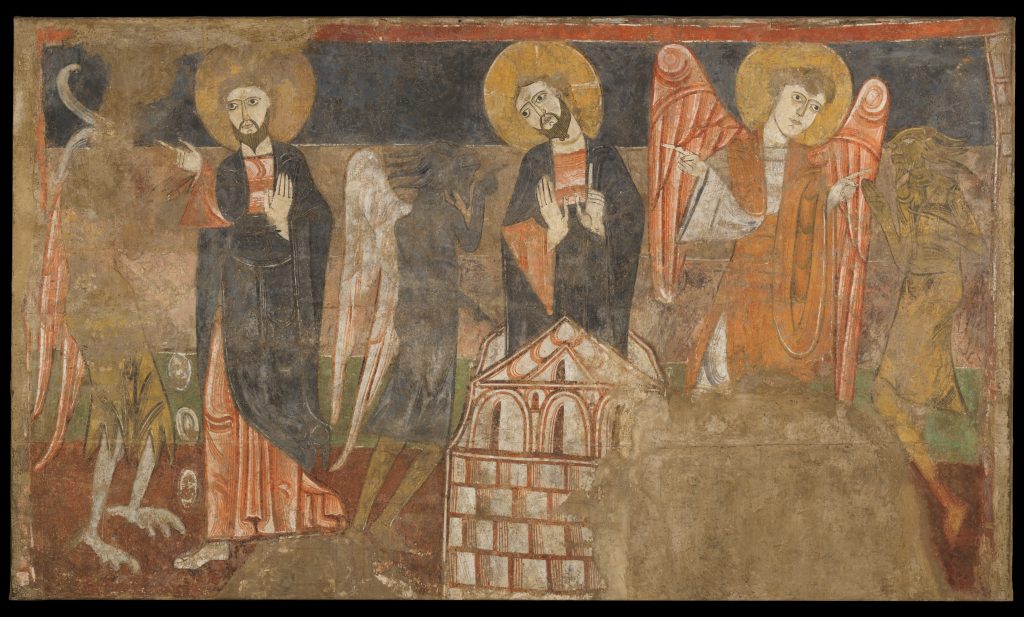
Fresco of The Temptation of Christ by The Devil from the church of San Baudelio de Berlanga in Soria, Spain, ca. 12th century, The Metropolitan Museum of Art, New York, NY, US.
Early depictions of Satan depicted defeated and grotesque creatures, often with a monstrous appearance with bat-like wings, or as a figure of deception whispering corruptive temptation into the susceptible ears of humans. Portrayals were set within infernal landscapes to convey associations of hellscapes. Other symbolic elements such as shackles and demonic beings appear to emphasize Satan’s role as the tormentor of damned souls. The renderings were intended to evoke fear, repulsion, and moral caution.
Christian art has also frequently also featured serpent iconography to represent the original temptation in the Garden of Eden.
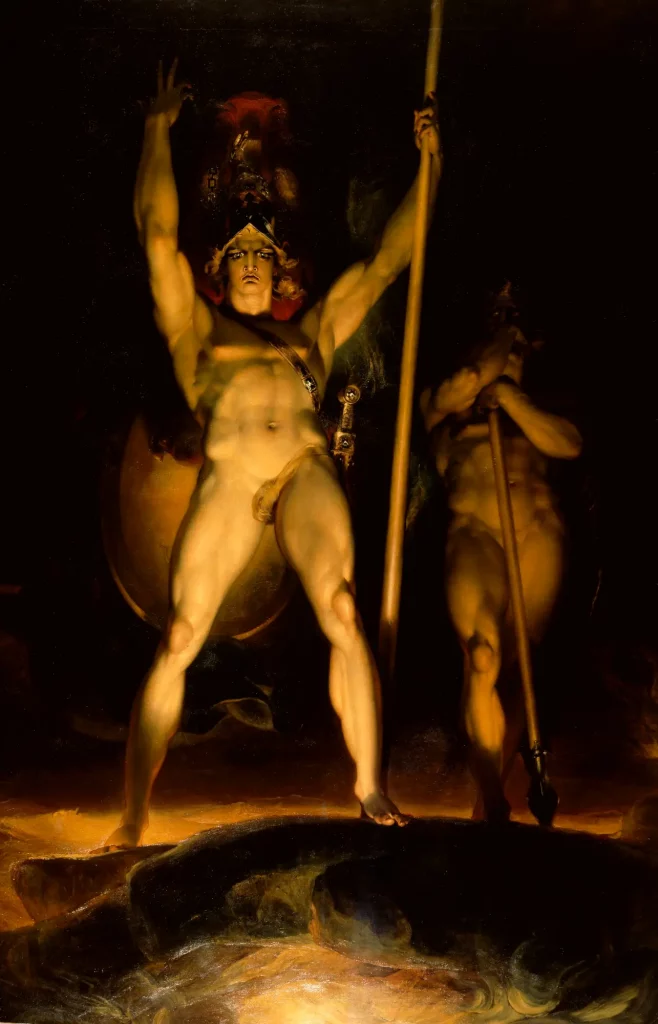
Sir Thomas Lawrence PRA, Satan Summoning His Legions, ca. 1796 – 1797, Royal Academy, London, UK.
During the Renaissance, Christian art evolved to incorporate more nuanced interpretations of the Dark Lord. Satan was portrayed as a majestic and enigmatic figure, reflecting the period’s passion for individualism. Renaissance artists explored the psychological aspects of Satan’s character and the seductive allure of evil, reflecting the intellectual and artistic pursuits of the era that was evident in the depictions that sought to convey awe and fascination.
In Renaissance art, Satan’s appearance became more humanized and was characterized by a regal countenance, and formerly grotesque imagery was now glamorized. Some artists featured Satan as a soldier clad in armor, underscoring his role as the leader of the angel rebellion, and fiery landscapes were still utilized to showcase his dominion over hell. There was also a revival of public interest in classical mythology that influenced depictions of Satan as a tragic hero.
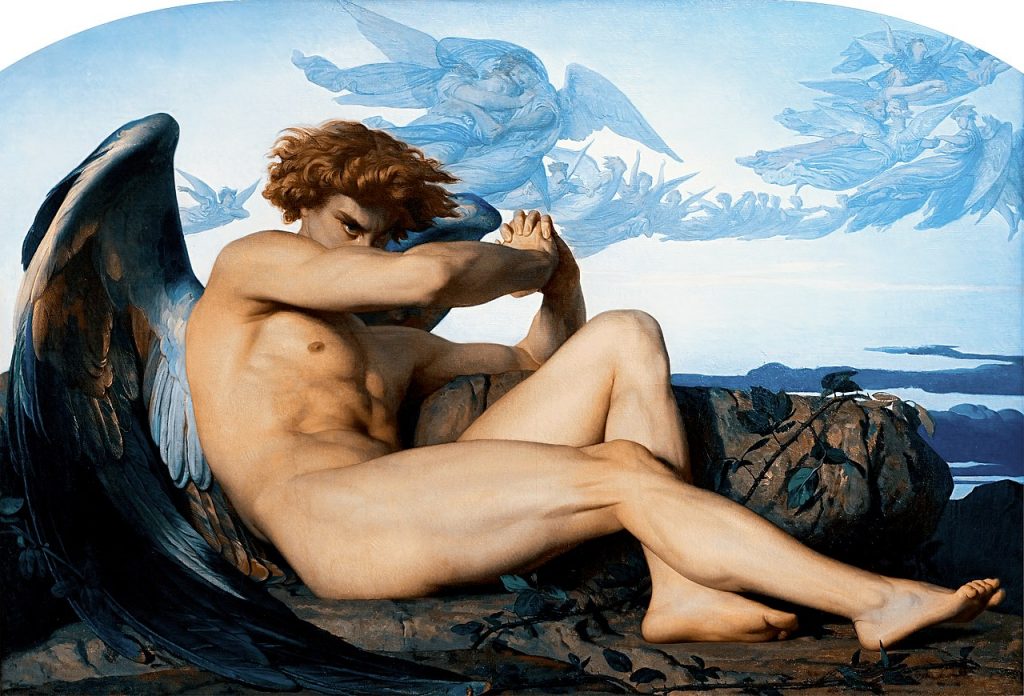
Alexandre Cabanel, Fallen Angel, ca. 1847, Musée Fabre, Montpellier, France. Wikimedia Commons (public domain).
The Fallen Angel (L’Ange déchu) was created by French artist Alexandre Cabanel in 1847. This captivating painting portrays the Devil, Lucifer, in a state of sorrow and fury following his expulsion from Heaven, and it is particularly famous for capturing a solitary tear-drop on his face. The masterpiece currently resides in the collection of the Musée Fabre in Montpellier, France, and continues to be widely celebrated and admired by art enthusiasts around the world.
The modern portrayal of Satan persistently pushes the boundaries of authority and societal norms, presenting a challenge to conventional perceptions. In the contemporary context, depictions of Satan have undergone a transformation, infusing the character with a captivating blend of wit, charm, and profound intellect. However, the portrayal still emphasizes his inherent penchant for manipulation and deceit.
Artists and filmmakers actively contribute to the evolution of Satan’s character, drawing inspiration from a vast array of mythologies, literature, and religious beliefs. As a result, the depiction of Satan becomes increasingly intricate and multi-dimensional, surpassing traditional interpretations. It can be argued that Satan has now emerged as an intellectual concept that deeply resonates with the complexities of the human psyche, symbolizing the internal struggle between good and evil within individuals.

Promotion Image for Netflix show, Lucifer. Image from RottenTomatoes.com.
DailyArt Magazine needs your support. Every contribution, however big or small, is very valuable for our future. Thanks to it, we will be able to sustain and grow the Magazine. Thank you for your help!